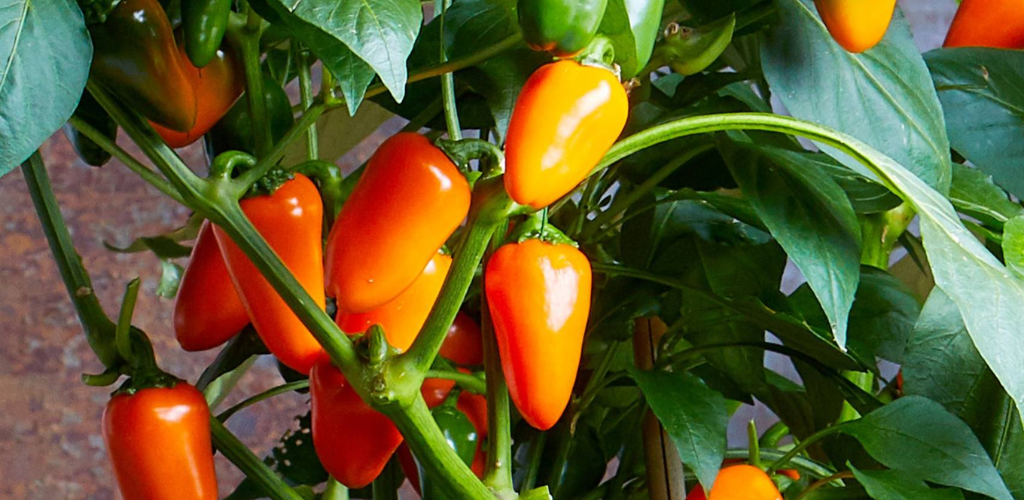12 Secrets to Growing Peppers in Your GardenMathieu Dupont by Mathieu Dupont
Simple tips that will help you grow lots of peppers, keep your plants healthy, and increase your yield.
Bell peppers are common in home gardens. Bell peppers do not contain capsaicin, so they are not as hot as some varieties of chili peppers. Bell peppers can be eaten raw but are commonly used in other recipes.
Peppers are fairly easy to grow but there are a few tips for growing peppers that will give you a better yield.
With these tips, you’ll enjoy a bountiful harvest of sweet, crunchy peppers to feed your family this summer.
1) The different colors of peppers
When you go to your local greengrocer, you will see several different colors of peppers but red peppers and green peppers are the most commonly available.
Red peppers and green peppers are actually the same plant, the color actually depends on the ripeness of the fruit. First they will be green then if left on the plant they will then turn red. Since red peppers are on the plant longer they are higher in vitamin C and tend to be sweeter than green peppers.
There are varieties of peppers that are purple, yellow, orange, brown, or white. They are different plants and you can plant more than one variety to get a whole panache of colors in your recipes.
2) Choose carefully where to plant peppers
Peppers love the sun so choose a spot in your garden where they can get sun all day. Make sure they won’t be shaded by trees or other tall plants like sunflowers or tomatoes.
Peppers like soil that is well drained. They do not like to wade in water so make sure the area is well drained. They prefer medium soil with sand and clay.
They like a soil pH between 6.0 and 7.0. If you don’t know your soil pH, get a test kit and make adjustments as needed.
Before planting your peppers, add compost or fertilizer to the soil and till it in. This will help improve drainage and provide nutrients to the peppers.
Don’t plant peppers where you recently planted tomatoes, eggplants, or potatoes. These plants attract the same diseases that can be harmful to peppers. Viruses and fungi can live in the soil for a few years, so wait at least three years before planting in the same area.
3) When to plant peppers
Peppers love heat, so you don’t want to start them from seed in the garden. Plant them to start about 8 to 10 weeks before the expected last frost date or purchase seedlings from a greenhouse.
Peppers also take about two to three months to mature so planting them from young plants gives them a head start over planting from seed.
Young peppers do not like cool temperatures. Get them used to being outdoors by putting them outside during the day and bringing them inside at night so they are not exposed to cold air at night. After a few weeks, they should be ready to be planted outside.
4) Planting the pepper plants
Once it is at least 15°C at night, you can plant your peppers in the garden. You can warm the soil by covering it with black plastic for a week before planting your pepper plants.
When planting, do not plant them any deeper than they were in the pots. Peppers do not like to be planted deep. Space them about 18 to 24 inches apart.
5) Choose the right vegetable garden companions for peppers
Plant your peppers near your tomatoes. Tomatoes help keep beetles and soil microbes away to protect the peppers.
Peppers can also be planted near cucumbers, carrots, eggplants and onions. If you have a problem with beetles, plant geraniums or petunias near your peppers.
Basil grows well near peppers and repels insects. Parsley attracts pollinators and certain types of wasps that repel aphids.
Avoid planting broccoli, cabbage, or mustard plants near your peppers. You should also avoid planting peppers near fennel or green beans.
6) The supports
You don’t need to stake peppers but it can keep them off the ground. If your plants droop, they are more susceptible to pests and soil microbes.
7) Make a good mulch
Peppers like to be kept warm and have well-drained soil so a good mulch around the plants is essential. A dark mulch absorbs more heat from the sun to keep the soil warm.
Peppers also like grass clippings. Grass mulch helps prevent weeds from quickly entering your garden and damaging the roots of the plants.
8) Proper watering
Peppers need a lot of water, about 2 to 5 cm of water per week. Observe the amount of water obtained from the rain with a rain gauge and supplement with water if necessary.
If you live in a hot climate or have very hot days, you may need to water twice a day. If your peppers get too dry, they can become bitter.
However, overwatering can damage the roots or cause the flowers to rot.
9) Pruning pepper plants
Remove the first flowers from each plant. This forces the plant to use its energy to grow the entire plant and not just one fruit.
This can help the plant produce more peppers later and you will get a better harvest.
10) Fertilizer
If you’re adding fe
